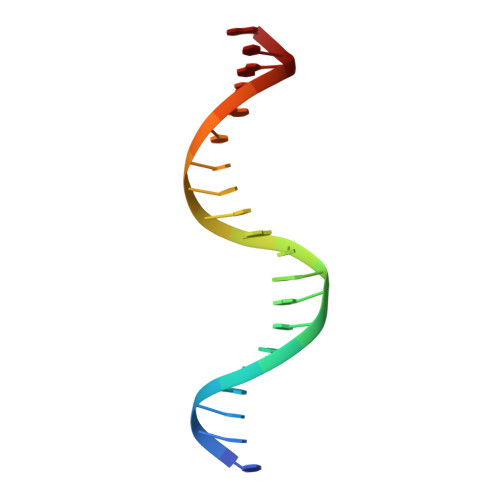Sequence Recognition of DNA by Protein-Induced Conformational Transitions.
Watkins, D., Mohan, S., Koudelka, G.B., Williams, L.D.(2010) J Mol Biology 396: 1145-1164
- PubMed: 20053356
- DOI: https://doi.org/10.1016/j.jmb.2009.12.050
- Primary Citation of Related Structures:
3JXB, 3JXC, 3JXD - PubMed Abstract:
The binding of proteins to specific sequences of DNA is an important feature of virtually all DNA transactions. Proteins recognize specific DNA sequences using both direct readout (sensing types and positions of DNA functional groups) and indirect readout (sensing DNA conformation and deformability). Previously we showed that the P22 c2 repressor N-terminal domain (P22R NTD) forces the central non-contacted 5'-ATAT-3' sequence of the DNA operator into the B' state, a state known to affect DNA hydration, rigidity and bending. Usually the B' state, with a narrow minor groove and a spine of hydration, is reserved for A-tract DNA (TpA steps disrupt A-tracts). Here, we have co-crystallized P22R NTD with an operator containing a central 5'-ACGT-3' sequence in the non-contacted region. C.G base pairs have not previously been observed in the B' state and are thought to prevent it. However, P22R NTD induces a narrow minor groove and a spine of hydration to 5'-ACGT-3'. We observe that C.G base pairs have distinctive destabilizing and disordering effects on the spine of hydration. It appears that the reduced stability of the spine results in a higher energy cost for the B to B' transition. The differential effect of DNA sequence on the barrier to this transition allows the protein to sense the non-contacted DNA sequence.
- School of Chemistry and Biochemistry, Georgia Institute of Technology, Atlanta, GA 30332-0400, USA.
Organizational Affiliation:


















